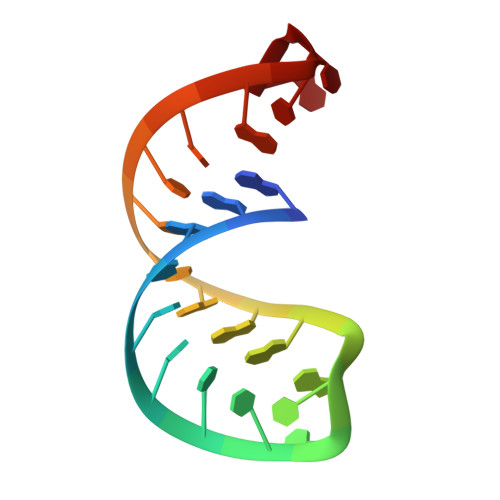Structure of the acceptor stem of Escherichia coli tRNA Ala: role of the G3.U70 base pair in synthetase recognition.
Ramos, A., Varani, G.(1997) Nucleic Acids Res 25: 2083-2090
- PubMed: 9153306
- DOI: https://doi.org/10.1093/nar/25.11.2083
- Primary Citation of Related Structures:
1IKD - PubMed Abstract:
The fidelity of translation of the genetic code depends on accurate tRNA aminoacylation by cognate aminoacyl-tRNA synthetases. Thus, each tRNA has specificity not only for codon recognition, but also for amino acid identity; this aminoacylation specificity is referred to as tRNA identity. The primary determinant of the acceptor identity of Escherichia coli tRNAAlais a wobble G3.U70 pair within the acceptor stem. Despite extensive biochemical and genetic data, the mechanism by which the G3.U70 pair marks the acceptor end of tRNAAla for aminoacylation with alanine has not been clarified at the molecular level. The solution structure of a microhelix derived from the tRNAAla acceptor end has been determined at high precision using a very extensive set of experimental constraints (approximately 32 per nt) obtained by heteronuclear multidimensional NMR methods. The tRNAAla acceptor end is overall similar to A-form RNA, but important differences are observed. The G3.U70 wobble pair distorts the conformation of the phosphodiester backbone and presents the functional groups of U70 in an unusual spatial location. The discriminator base A73 has extensive stacking overlap with G1 within the G1.C72 base pair at the end of the double helical stem and the -CCA end is significantly less ordered than the rest of the molecule.
- MRC Laboratory of Molecular Biology, Hills Road, Cambridge CB2 2QH, UK.
Organizational Affiliation:
















